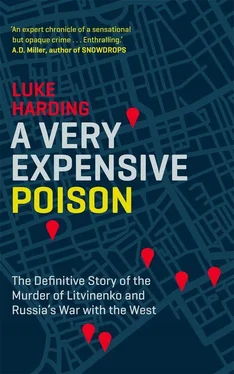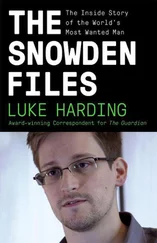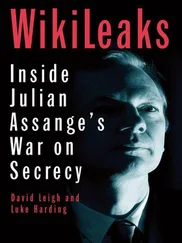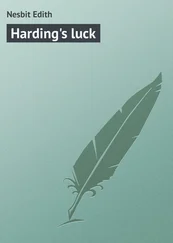The Mayak complex sprang from the Cold War, and the post-1945 nuclear arms race between the world’s two superpowers, the US and the Soviet Union. After the American atomic bombings of Nagasaki and Hiroshima, Stalin accelerated the Soviet nuclear programme. The nuclear physicist Igor Kurchatov directed research, while Lavrenty Beria, head of the NKVD secret police, was put in charge of efforts to steal nuclear secrets from the US, Britain and Canada.
These efforts worked. The Soviets were able to recruit a network of agents from among the scientists designing the US atomic bomb in Los Alamos, New Mexico – Robert Oppenheimer, Enrico Fermi, Leo Szilard. In Britain, Donald Maclean, part of the Cambridge spy ring, told Moscow that the British were developing a uranium bomb too. It was an exhaustive international espionage operation that allowed Moscow to catch up.
Money and privileges flowed towards physicists and engineers who worked in this new and covert field. They included Andrei Sakharov, a gifted nuclear scientist and future dissident, and the physicists Yakov Zeldovich and Lev Landau. With many others, they successfully designed a Soviet H-bomb. A network of secret Atomgrads – closed cities – was built. These cities were dedicated to nuclear weapons research and development.
Mayak was located 43 miles (70 km) north-west of the city of Chelyabinsk and south of Yekaterinburg. The spot was chosen for its remoteness: it was in the geographic centre of Russia, far away from any front line, and protected by the Ural mountains to the west and Siberia to the east. In a mere eighteen months, Kurchatov built the USSR’s first plutonium production reactor, Anachka. Some 70,000 gulag labourers were used. More reactors followed. The site was based around the closed towns of Ozersk and Snezhinsk.
Many of the people who worked in Russia’s fledgeling nuclear industry had fled from war zones further west; they came from Belarus, Ukraine, Poland. Some were Jews who escaped the Nazis. Within a few years, Chelyabinsk was a booming industrial city, home to engineers, metallurgists and mathematicians. Another principal atomic facility was constructed at Sarov, 450 miles (725 km) south-east of Moscow near the Volga river. Sarov specialised in atomic weapons design and research. Sakharov worked there from 1950.
Officially, neither Mayak nor the Sarov complex existed: they didn’t appear on maps. Residents of closed cities weren’t permitted to leave for holidays until the 1950s. Sarov was codenamed Arzamas-16; Mayak Chelyabinsk-40, and later Chelyabinsk-65. They were closed to Soviet citizens, unless they had a good reason to be there. And, of course, off-limits to foreigners. This made them objects of allure for western powers. (In 1960, American pilot Gary Powers was photographing the Mayak atomic plant when his CIA spy plane was shot down.)
Soviet physics was a beneficiary of Stalin’s determination to match the US bomb. But there was a price. Little attention was paid to the environmental consequences of handling large quantities of fissile material. For example, radioactive waste water from Mayak was pumped out into small lakes nearby and the Techa river. The complex itself was the scene of mishaps and dangerous small leaks.
In September 1957, a cooling tank storing tens of thousands of tonnes of dissolved nuclear waste overheated and blew up. A cloud of radioactive material was set free. It contaminated over 300 square miles. Radiation was found in the Arctic Sea. It was one of the worst accidents of the nuclear age, on a par with the disasters at Chernobyl and Fukushima. In 1967, there was another catastrophe when Lake Karachay, used as a mid-level nuclear waste dump, dried out. Wind threw radioactive dust over a huge area.
The Soviet authorities responded to these accidents predictably, with denial and cover-up. (It took thirty years before Moscow acknowledged the Kyshtym disaster, as the 1957 Mayak explosion was known.) Troops were sent to evacuate some villages; soldiers fenced off the Techa river with barbed wire. But locals weren’t told what had happened: the leak was a state secret. In summer, children still swam in the river; farmers watered their cattle; women drew water from the wells; locals cut hay.
Gradually, the toxic legacy from Mayak became impossible for the Kremlin to conceal. People were dying. The disasters of the fifties and sixties exposed at least half a million to radiation poisoning. Symptoms were ubiquitous: intestinal illnesses, nose bleeds, food allergies. There were respiratory and skin problems. Cancers were rife. In some of the worst-affected areas, it was unusual for villagers to live beyond fifty. Some were dead at twenty. Chronic radiation sickness affected future generations.
Paula Chertok, who grew up in Chelyabinsk, and later emigrated to the US, recalls: ‘Nearly everyone I know from Chelyabinsk had cancer of one sort or another. Many had blood disorders. My mother’s best friend, a doctor, died young from leukaemia. Every woman I know had breast cancer. And we didn’t live in the villages, we lived in Chelyabinsk proper. The environment was utterly contaminated and we never knew a thing.’ She added: ‘We drank the water, played near the rivers and lakes.’
By the 1990s, the local population was still suffering from health problems, although the rules for visiting closed nuclear cities were somewhat relaxed. However, finding once-secret Snezhinsk is something of a challenge: the turn-off point to the town isn’t marked with any signs. A high and rather rickety wooden fence surrounds Snezhinsk, with a checkpoint manned 24/7 at its only exit and entrance. A sign in a field in Russian and English warns non-authorised visitors not to go any further.
Meanwhile, the state that built Mayak disappeared. The demise of the Soviet Union made life difficult for all Russians, but for scientists it was a disaster. State institutions were unable to pay their employees; some moonlighted as taxi drivers; others flogged their possessions on the street. Atomic-weapons laboratories continued to function and academic visitors noted a high level of professionalism still. But with the apparent end of the Cold War their future looked bleak.
It was a moment when Boris Yeltsin’s Russia believed in dialogue with the outside world; after all, Moscow was broke. In the US and Europe there were worries about what might happen to the former Soviet Union’s nuclear technicians. Worst-case scenario: the experts would go off and work in Iran, Iraq or Libya. Russian scientists were given grants. A team from Princeton University advised closed cities like Sarov on how to transform their production lines from nuclear bomb manufacture to non-weapons activity.
Some of these US–Russian initiatives worked. The secret Avangard laboratory in Sarov, for example, mothballed weapons production and began manufacturing civilian radioactive isotopes instead. It exported them to foreign markets, including America. This was, in effect, a job-creation scheme for the town’s shrinking scientific workforce, down from 4,800 employees in the 1980s to 3,300 by 2000.
Avangard became the only place in the world where one particular isotope was made. It had been manufactured there since 1952. Not many people had noticed. The quantities involved were tiny, the export market practically non-existent. But then the isotope was very rare and highly unusual: an intensely radioactive silvercoloured metal.
Polonium.
* * *
On 18 July 1898 Marie and Pierre Curie discovered polonium while experimenting with the mineral pitchblende. Pitchblende contained uranium. They repeatedly heated it, and dissolved the residue in acid. This process allowed them to isolate a new and unknown substance. It had extraordinary properties. It was 400 times more radioactive than uranium. Curie called this new element polonium.
Читать дальше












